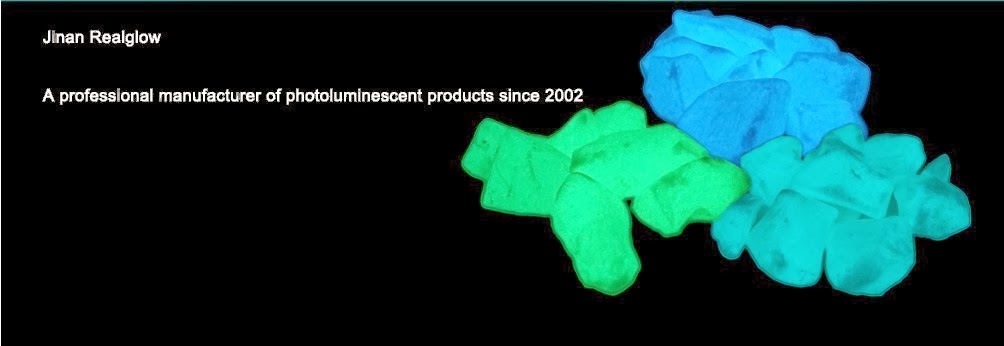photoluminescent pigment usually placed a lance material sandwich, sandwich isolated inside and outside peroxides and esters, after rubbing, two compounds react so luminous fluorescent dye
2013年10月31日星期四
Preparation of light- emitting material good performance
Sol - gel (So1-ge1) method is a very broad application prospects of nano- powder synthesis method , its main advantage is that at lower temperature synthetic products , and products with small particle size uniformity is good.Phosphorescent sand this SrAl2O4: Eu2 +, Dy3 + , the precursor material is an organic compound solution containing aluminum , with activator of activator, flux , catalyst compounds are organic solutions or aqueous mixture , water was added , remain in solution 2 ~ 3d, to form a gel , drying , removal of organic material , after ignition , and photoluminescent pigments N2 + H2 atmosphere ignition reduction derived carbon storage material . Sol - gel method can be prepared very good performance at the light emitting material , the reaction can be well controlled.
A new type of environmentally friendly photoluminescent pigment
Dy is a new type of environmentally friendly photoluminescent pigment , has attracted wide attention from researchers . Currently, the new luminescent pigments researchers to explore some novel methods for preparing the luminescent pigments.
High temperature solid-phase method is the preparation of Eu2 + activated strontium aluminate luminescent materials and traditional method of application of the first maximum . The law mainly Al2O3, SrCO3, Eu2O3, Dy2O3 as raw material , Glow in the dark pebbles amount of flux ( such as boric acid ) , mixed Ground, generally the first high temperature (1350 ℃ or so ) calcined , and then restored at a slightly lower temperature that Eu3 + becomes Eu2 +, reducing atmosphere can be 2% H2 +98% N2 to create , we can use a confined photoluminescent pigment active carbon . Finally, after cooling , fine grinding and sieving to obtain the product . This method is very obvious advantages of simple process , microcrystalline crystals of good quality, suitable for industrial production .
High temperature solid-phase method is the preparation of Eu2 + activated strontium aluminate luminescent materials and traditional method of application of the first maximum . The law mainly Al2O3, SrCO3, Eu2O3, Dy2O3 as raw material , Glow in the dark pebbles amount of flux ( such as boric acid ) , mixed Ground, generally the first high temperature (1350 ℃ or so ) calcined , and then restored at a slightly lower temperature that Eu3 + becomes Eu2 +, reducing atmosphere can be 2% H2 +98% N2 to create , we can use a confined photoluminescent pigment active carbon . Finally, after cooling , fine grinding and sieving to obtain the product . This method is very obvious advantages of simple process , microcrystalline crystals of good quality, suitable for industrial production .
salts luminescent material characteristics
Rare earth activated alkaline earth metal aluminate luminescent material is a rare earth Eu especially on the active element , an alkaline photoluminescent pigments aluminate to a class of luminescent substrate material . Where Eu and Dy co-activated strontium aluminate SrO · nA12O3: Eu, Dy is a typical representative of the 20th century, it was developed in the early 1990s, a new class of luminescent material activated alkali earth aluminate luminescent materials are characterized from beginning high brightness, long afterglow time (> 12h), non-radioactive hazards, resistance to environmental erosion, known as the green energy-saving materials . Glow in the dark tape: Eu, Dy emitting material , with the SrO/A12O3 ratio, the fluorescence wavelength and afterglow time is different , the SrO · A12O3: Eu, Dy, a yellow- green light after excitation , peak wavelength 520nm; 2SrO · 3A12O3: Eu, Dy, excited by blue-green light , the peak wavelength of 490nm. The afterglow time is longer than the latter the former, but the initial luminous intensity is the opposite .
2013年10月30日星期三
colorless transparent crystal
Pure colorless transparent crystal quartz variants. Chemical composition containing Si-46.7%, O-53.3%. Photoluminescent pigment of different physical or mechanical mixing and showed mixed colors. Purple and green is made of iron (Fe2 +) ion-induced color , purple also be titanium (Ti4 +) caused due to other color from the color center color . In the crystal containing sand-like , fragmented goethite , hematite, rutile , magnetite , garnet, chlorite inclusions ; hair crystal containing visible in the hair -like needle- like mineral inclusions formation. photoluminescent sheet and iron are called amethyst ; iron by ( golden yellow or lemon ) called citrine ; manganese and titanium were pink rose quartz who said ; smoked who said smoky quartz ; Brown who said citrine ; black transparent who called smoky quartz ; pale green are known as chalcedony .
订阅:
博文 (Atom)
